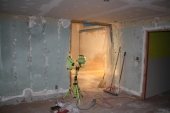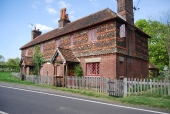posted 9 years ago
We recently put up a yurt with an earthen floor and ready to build an adjacent structure that will be our bathroom and utility room. We started out wanting to construct a strawbale infill, but due to space limitations, we couldn't give up that much room to the walls. Then we were interested in light straw clay, however I think it is too late to use this method this year as our wet winter (Western Oregon) is but a few weeks away (Let me know if I am wrong. We could keep our woodstove going and many fans to help dry, maybe?). We really would like to at least get the insulated shell and a basic bathroom before it gets too cold outside.
Our latest plan is to construct a standard stick frame, plywood sheathed building. We will use rockwool insulation, and interior/exterior lime and or clay plaster. I have a few questions regarding the wall "layers".
1. Do we need to use a vapor barrier if we plaster both sides of the wall? They use kraft paper on the interior here as well as 2 layers of grade d paper when stuccoing the exterior. Are these necessary? I would prefer to have breathable walls.
2. do I need to use lath/drywall before plastering? Or can I use chicken wire over the roxul/studs and plaster to that? I saw someone use chicken wire over fiberglass batts, and they said they had a bit of cracking as the fiberglass was too flexible. If I am not mistaken, the roxul insulation is more dense then fiberglass batts, then it would support the plaster better. Any thoughts?
3. as anyone used cob to accent drywall before plastering? One of the things that we like most about strawbale/cob is the non-square look. I was thinking I could use a combination of cob and wire mesh to make rounded edges (window frame, door, etc)
Any thoughts will be appreciated. Thanks!







